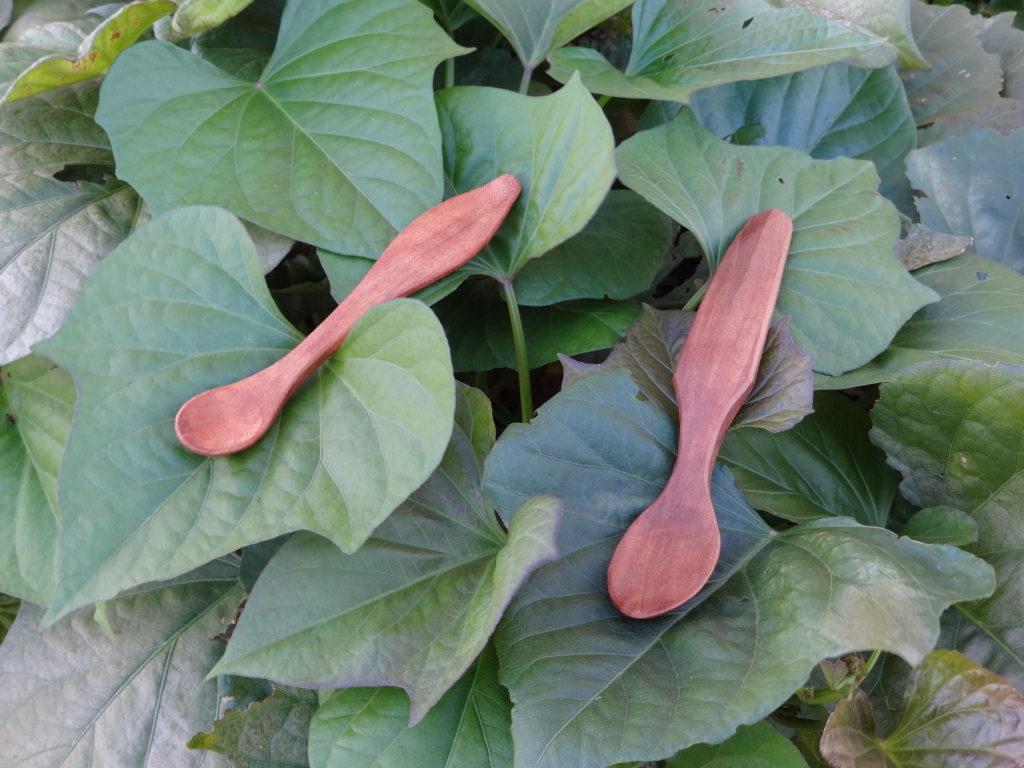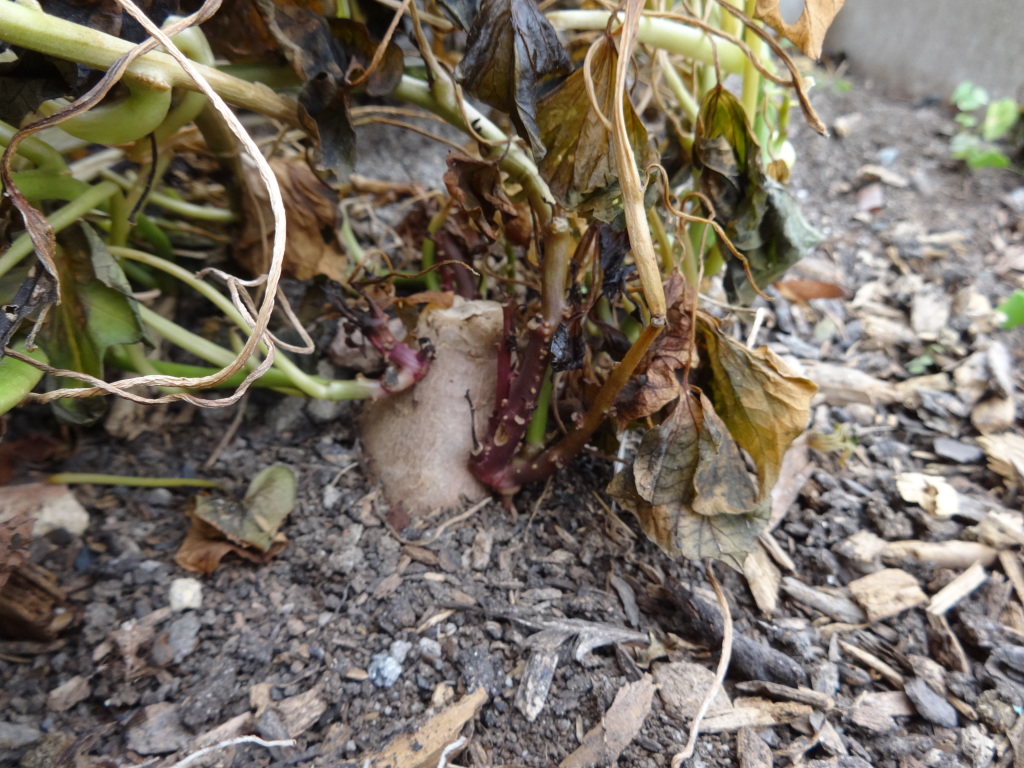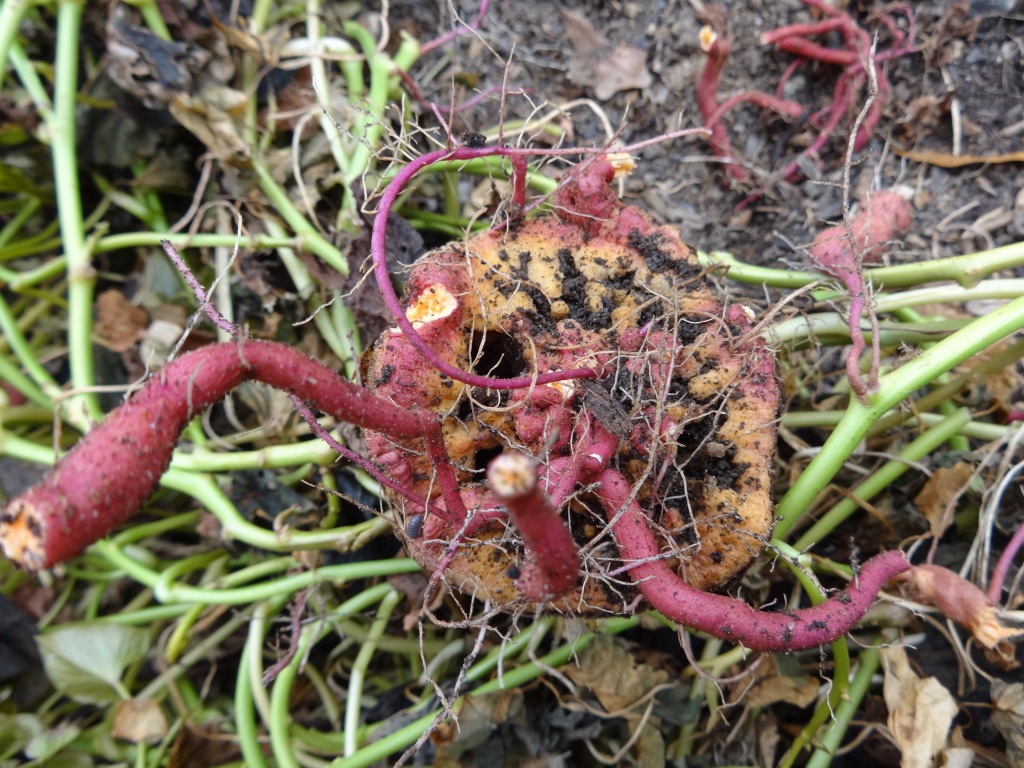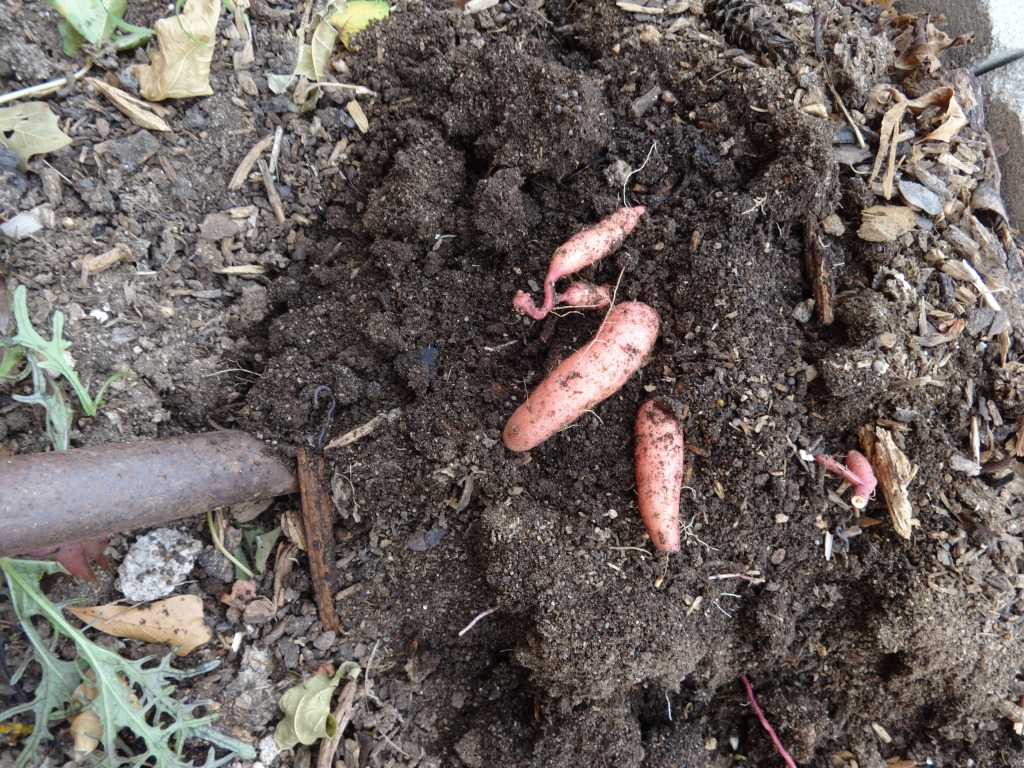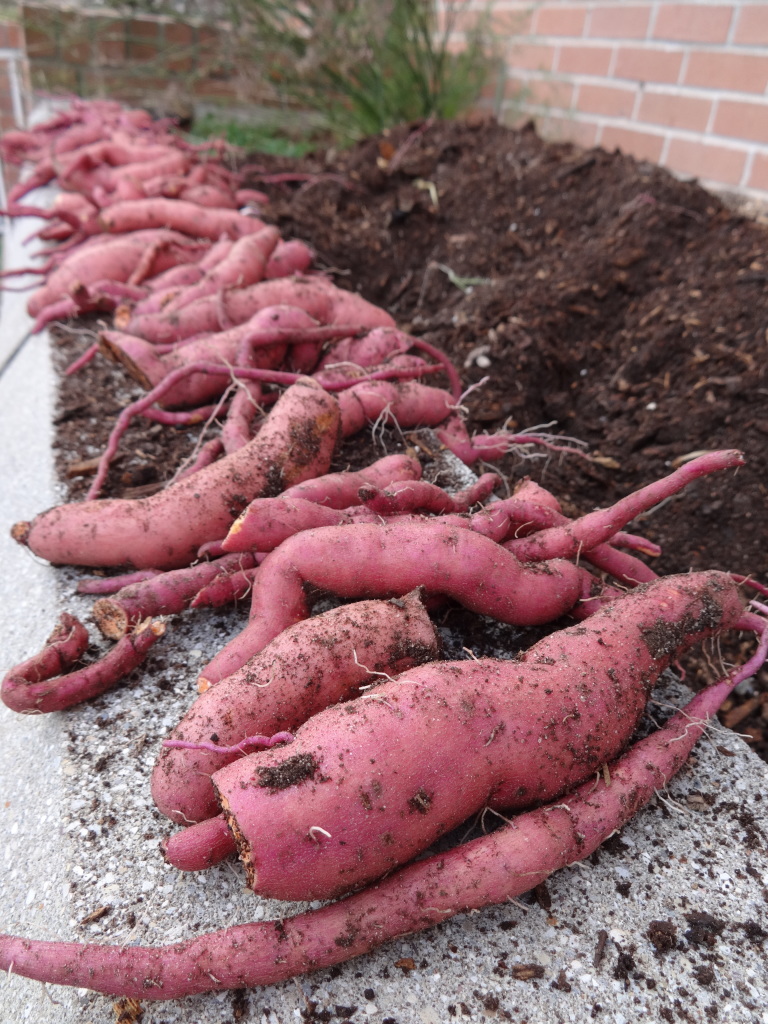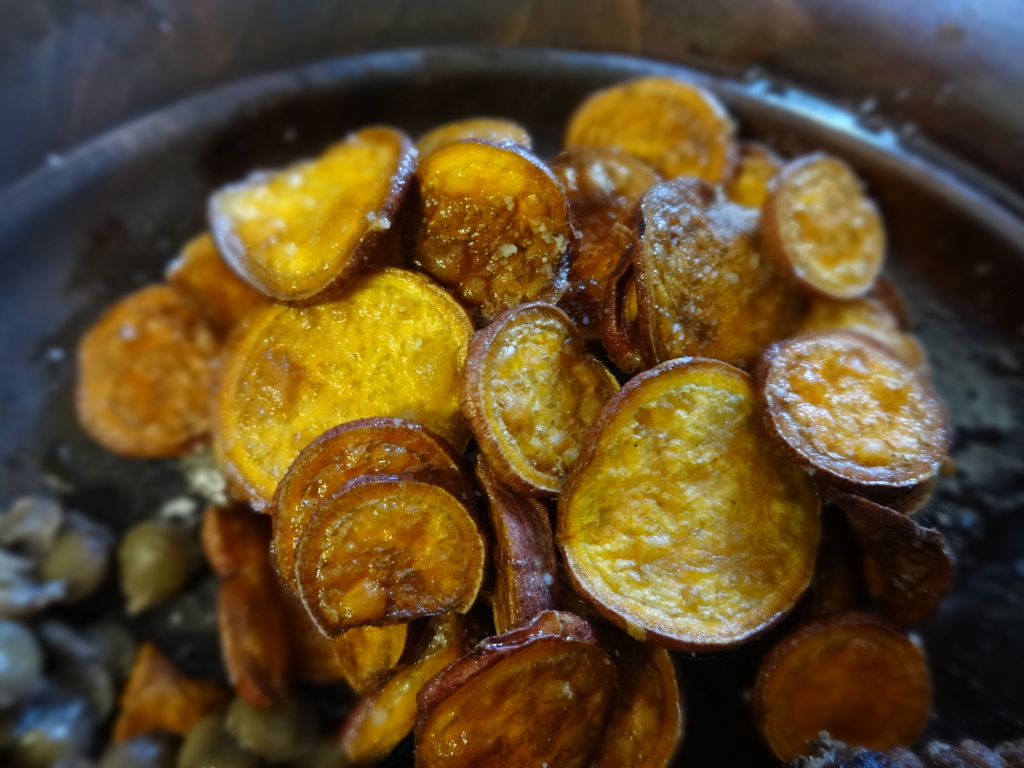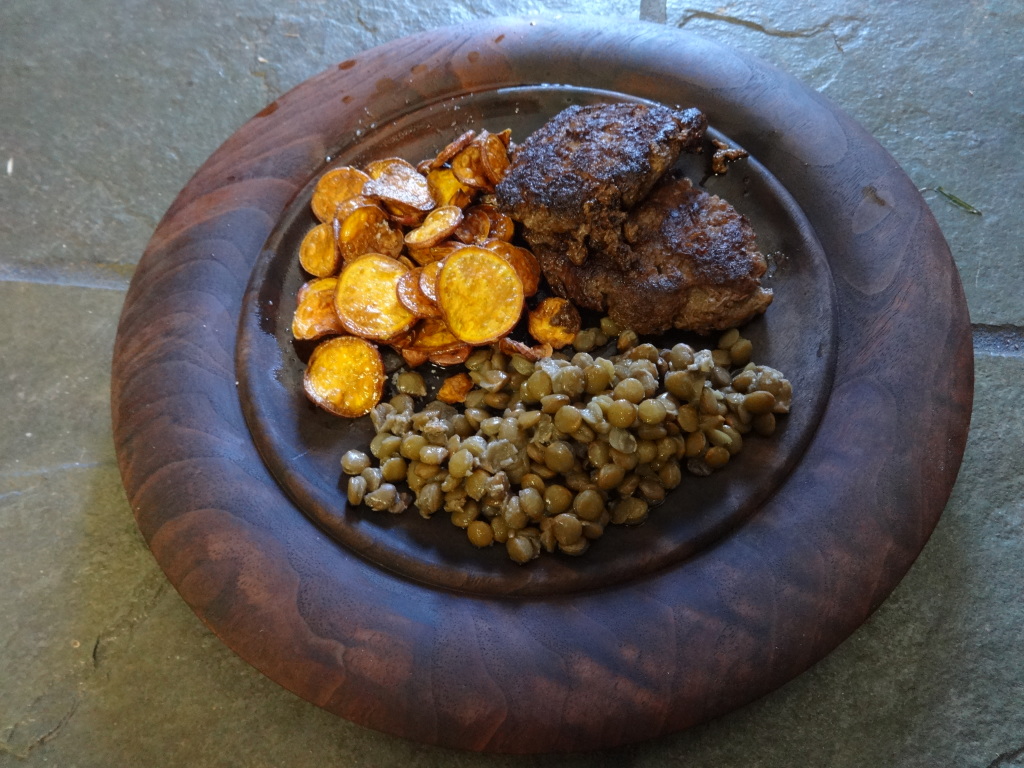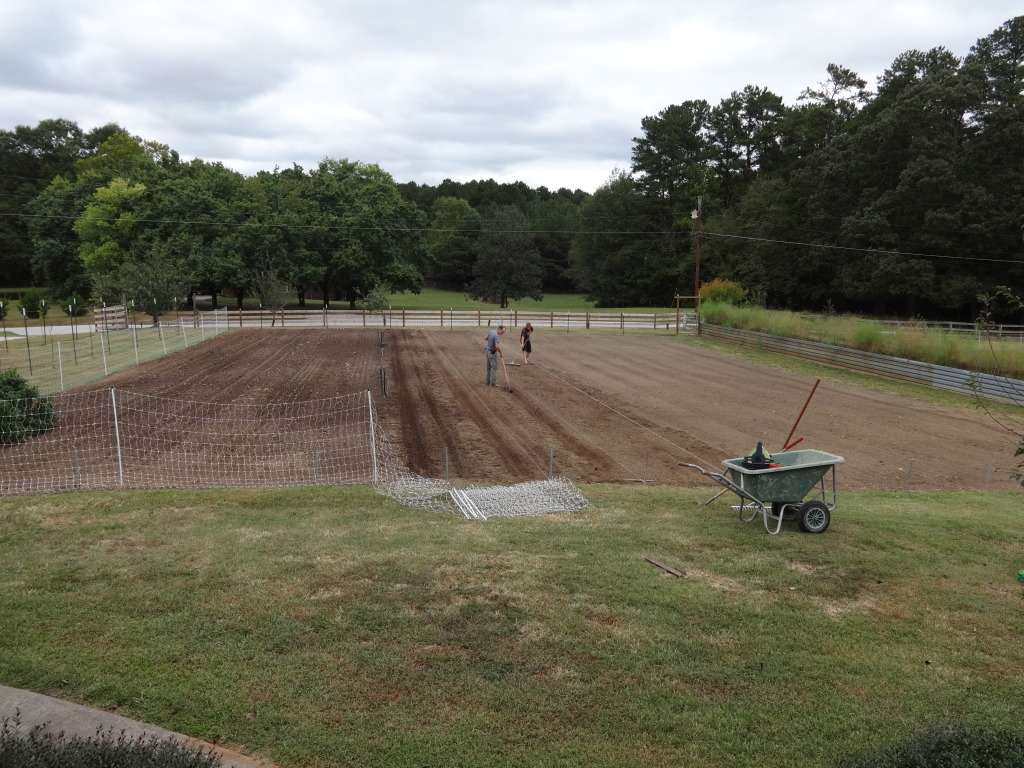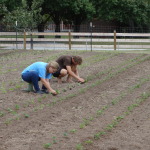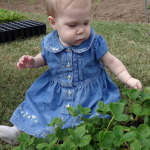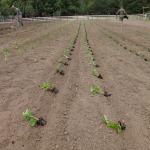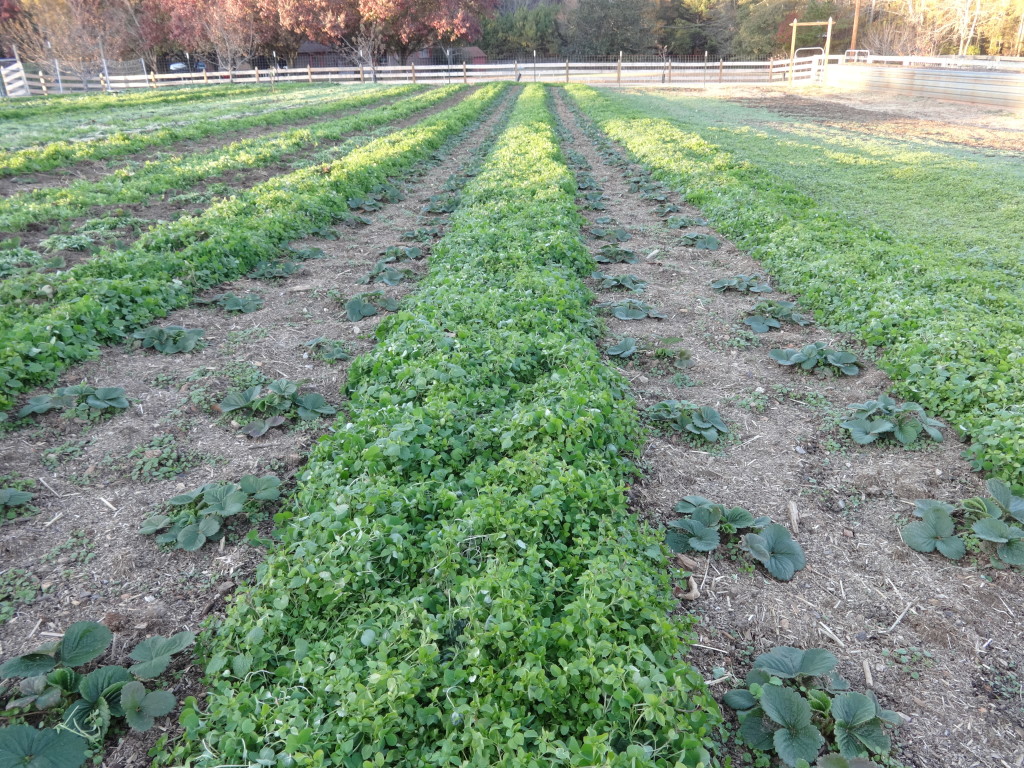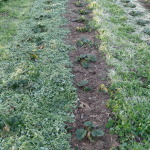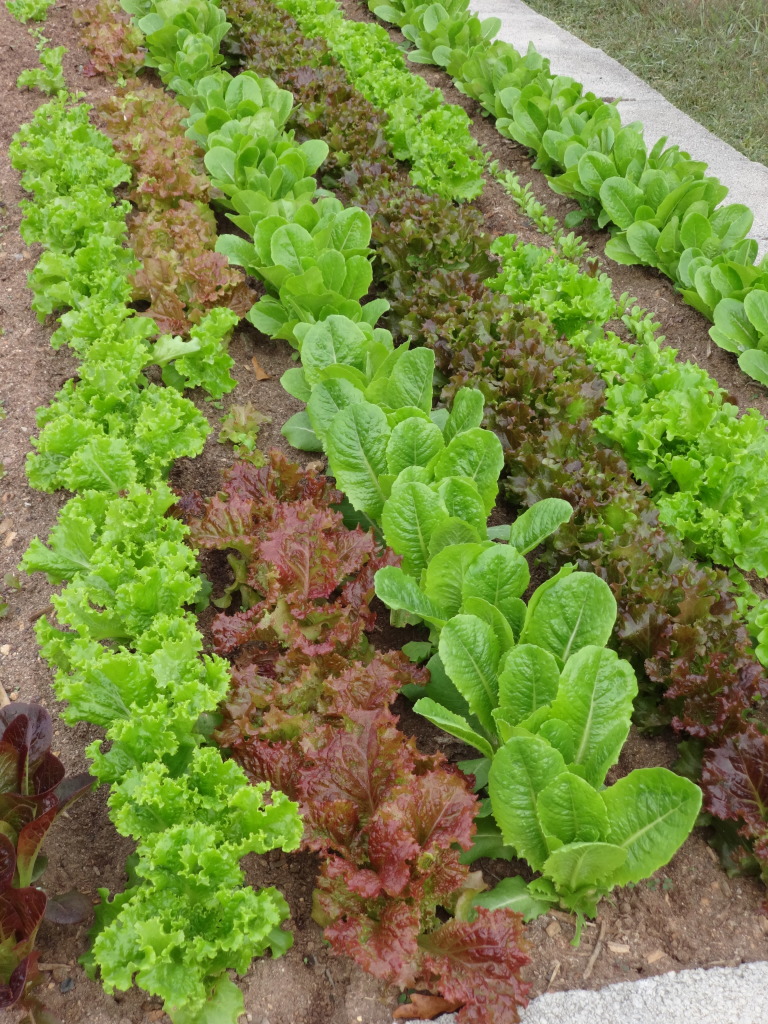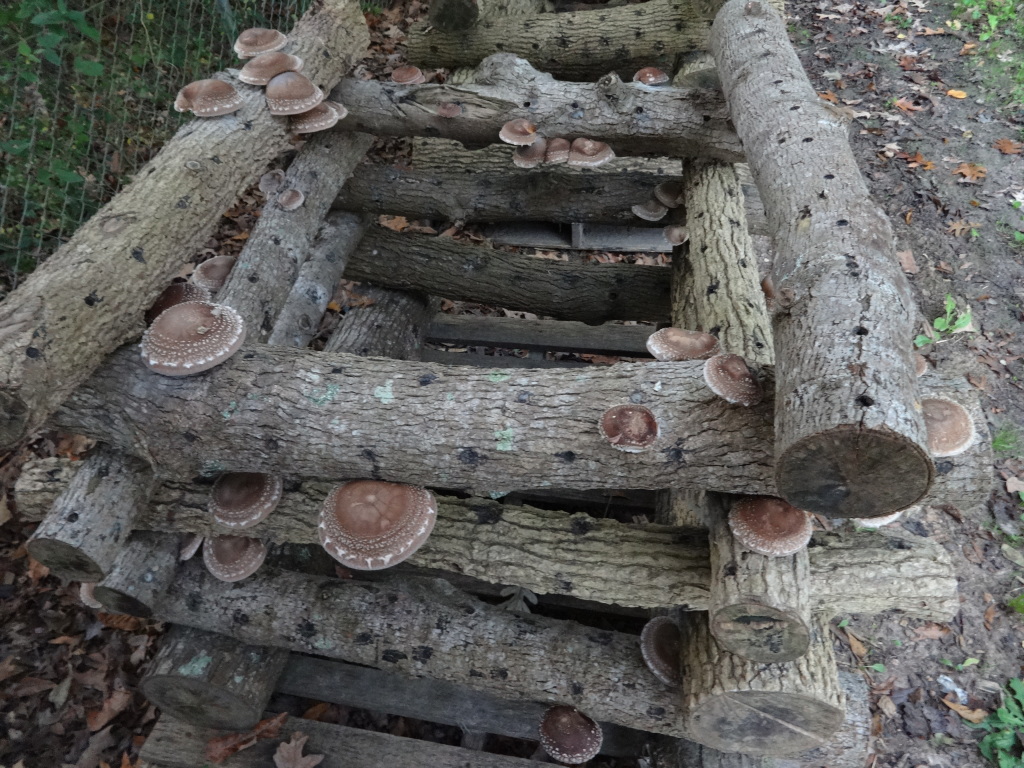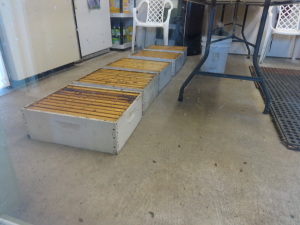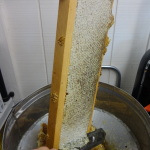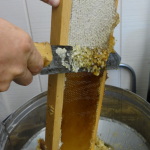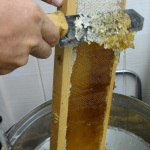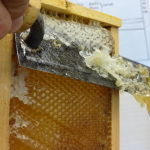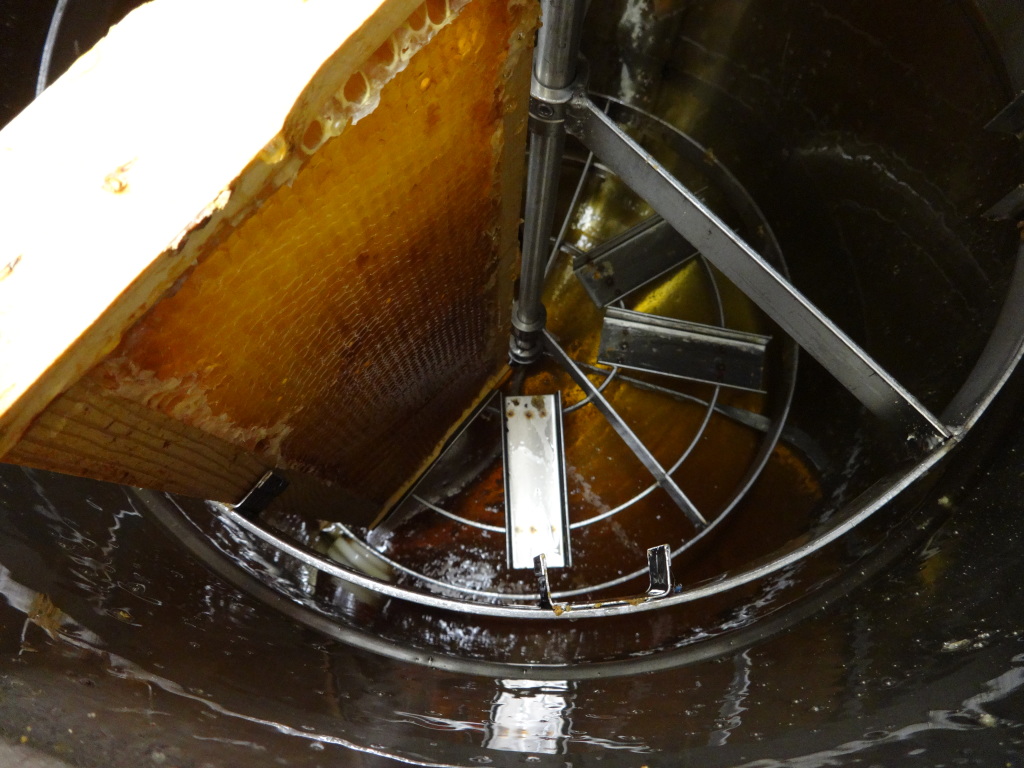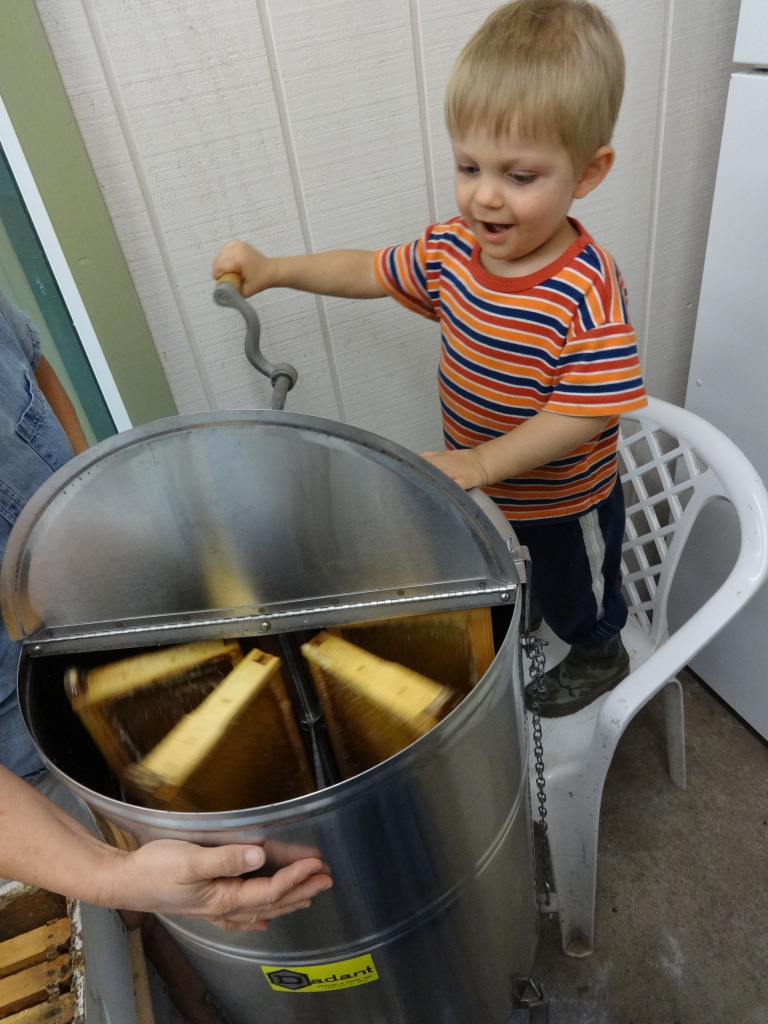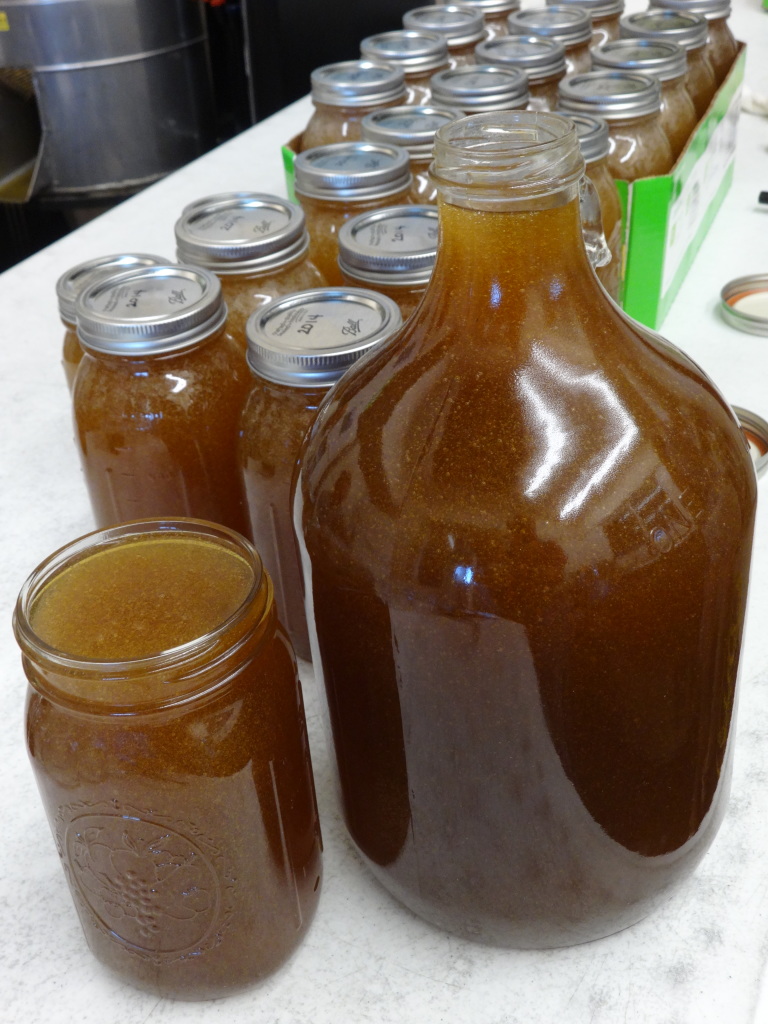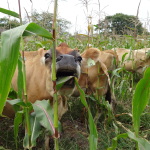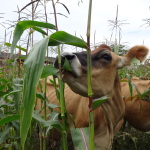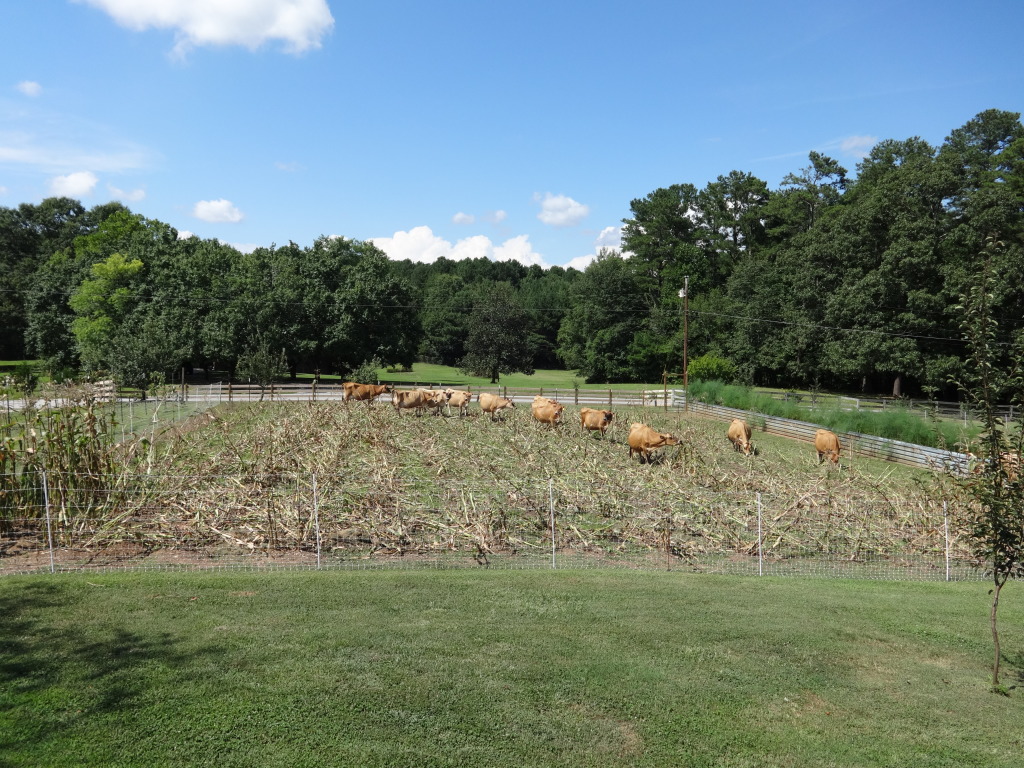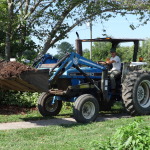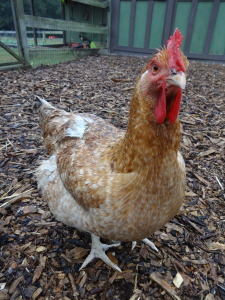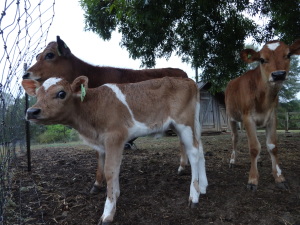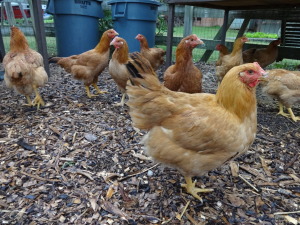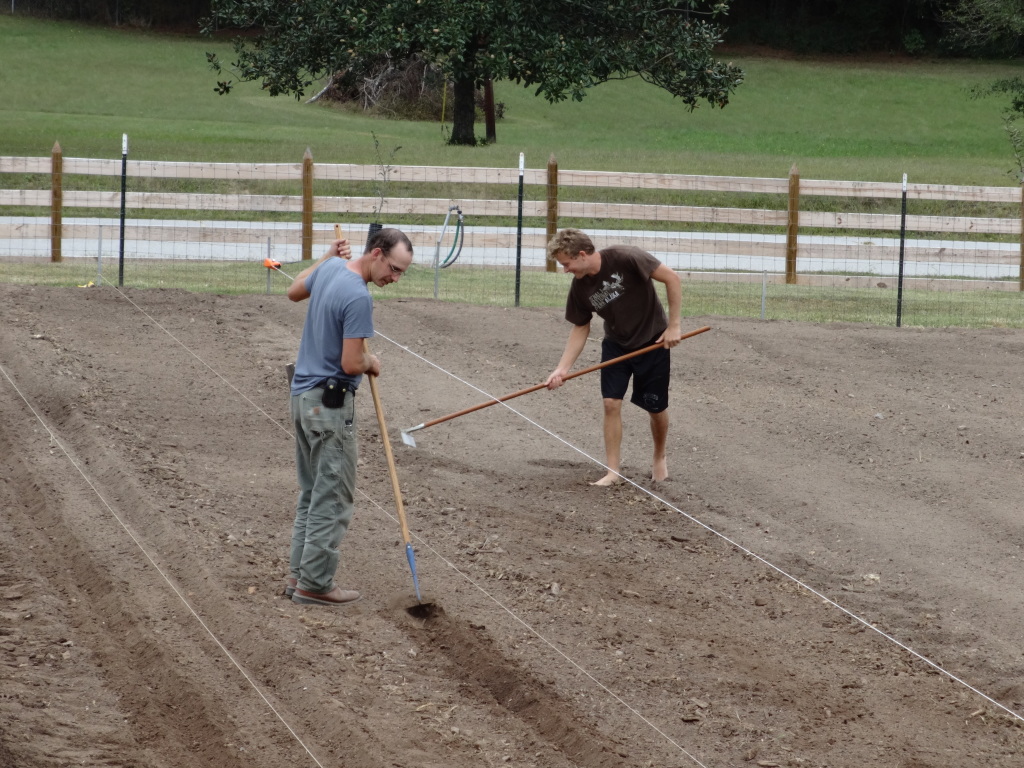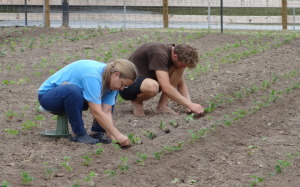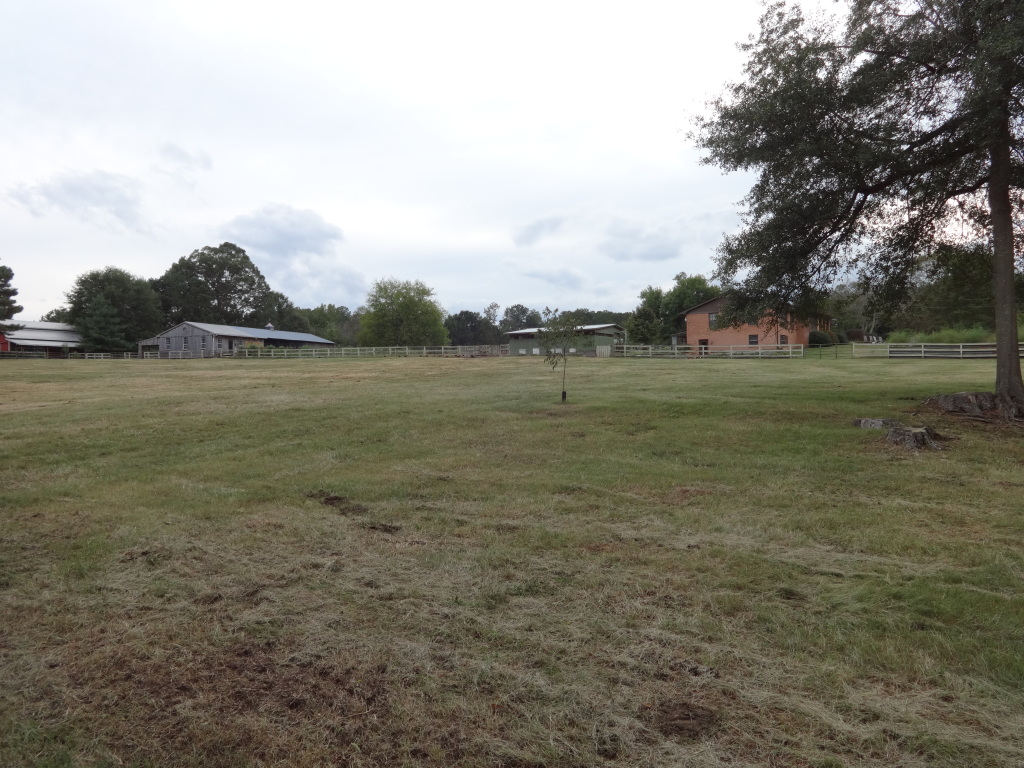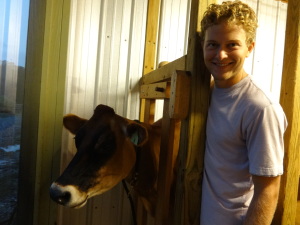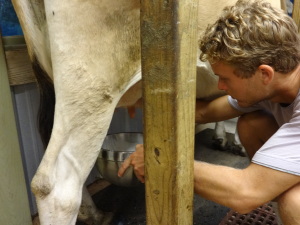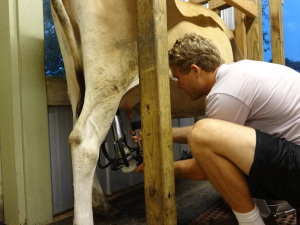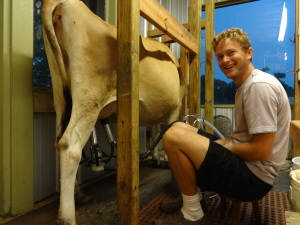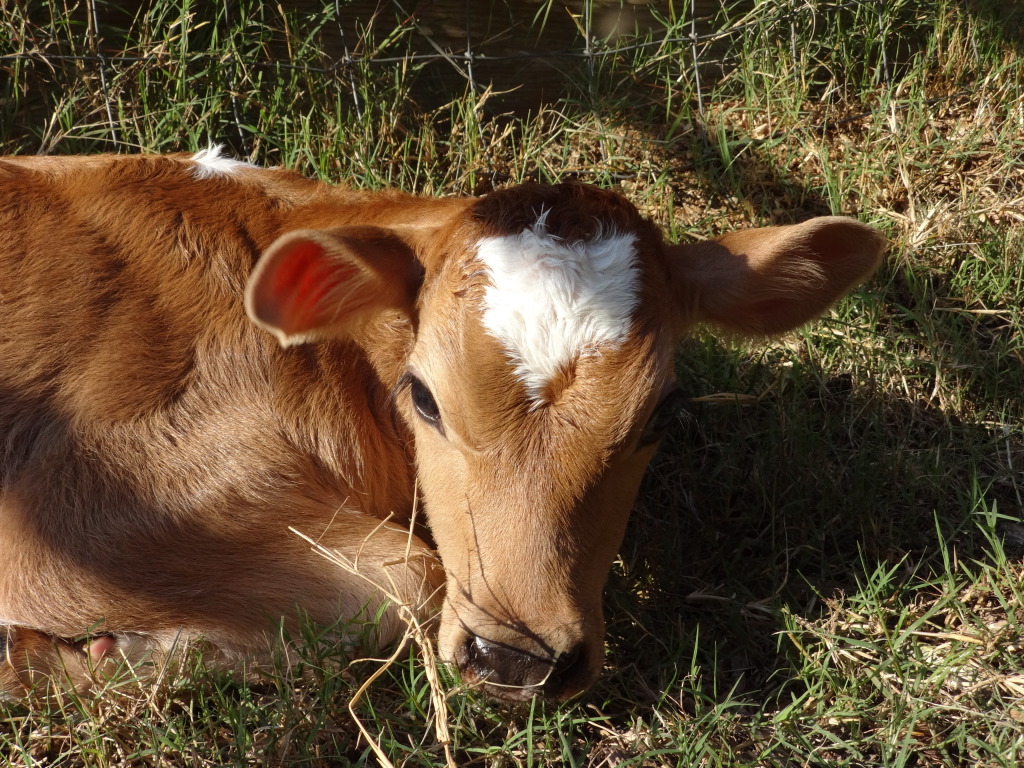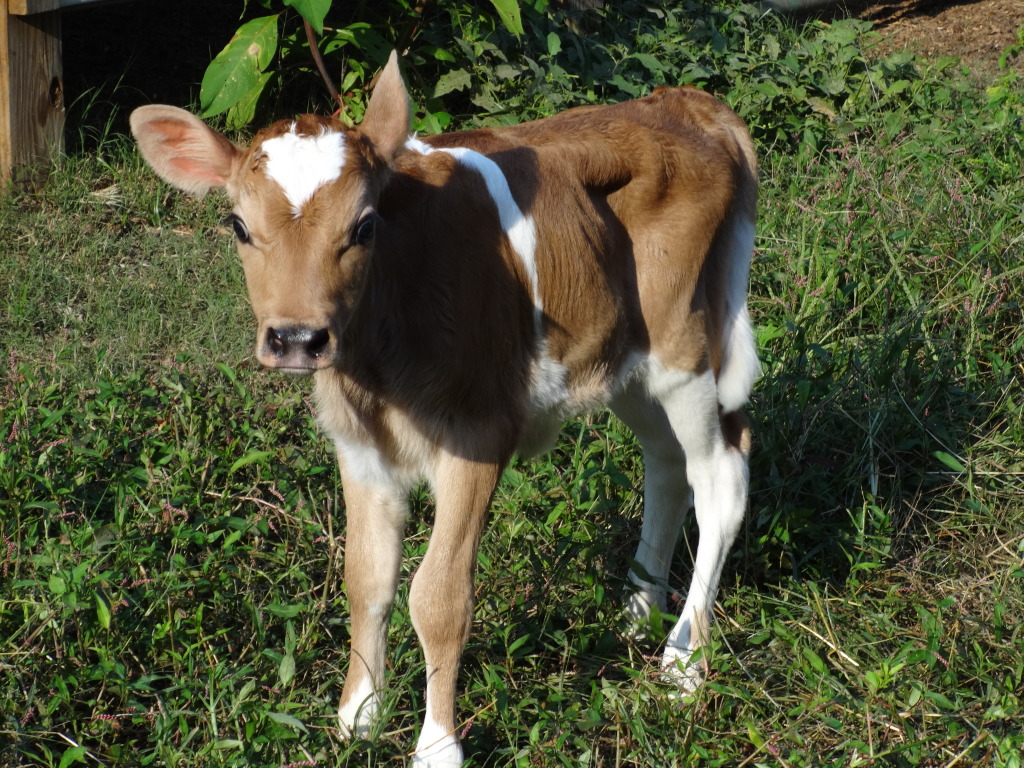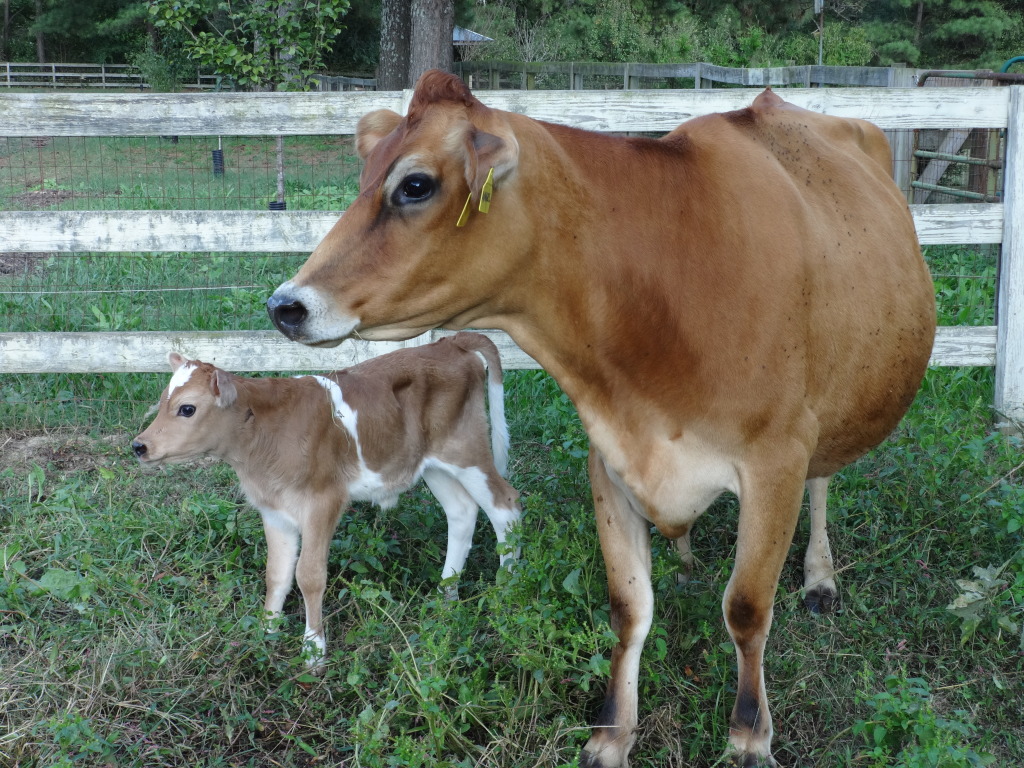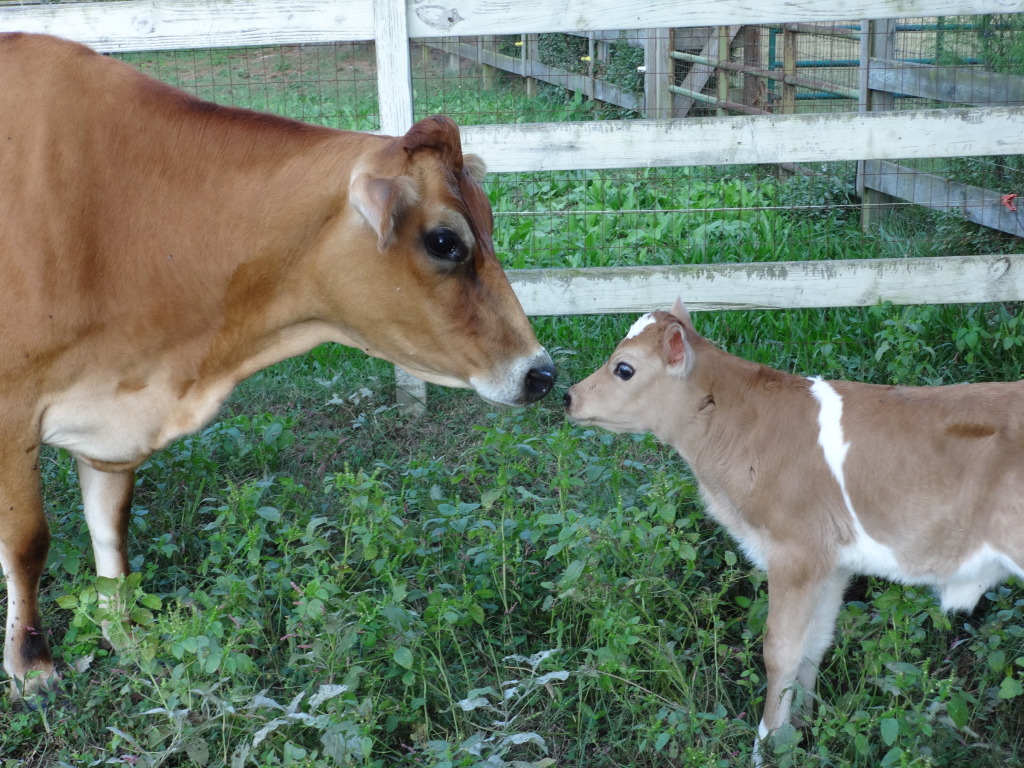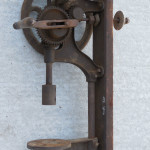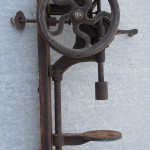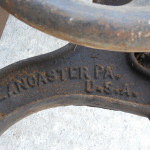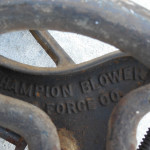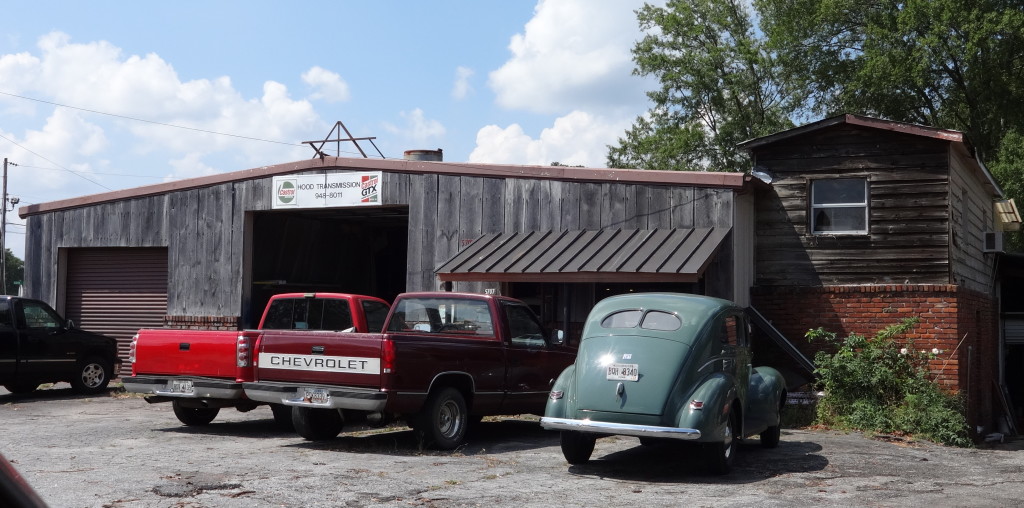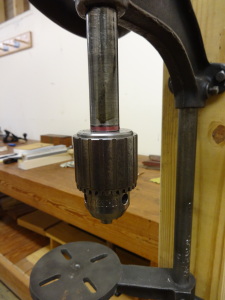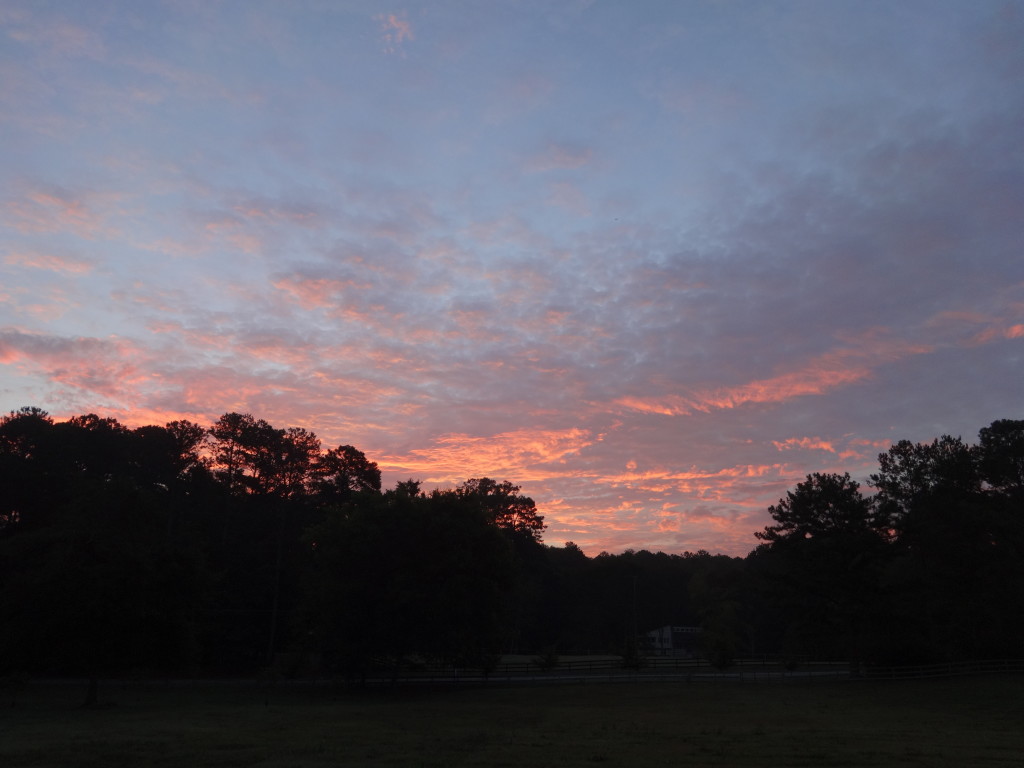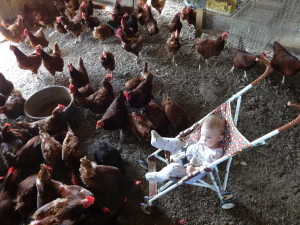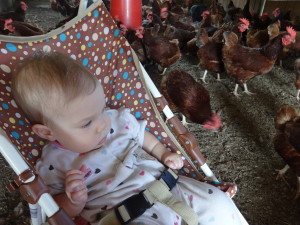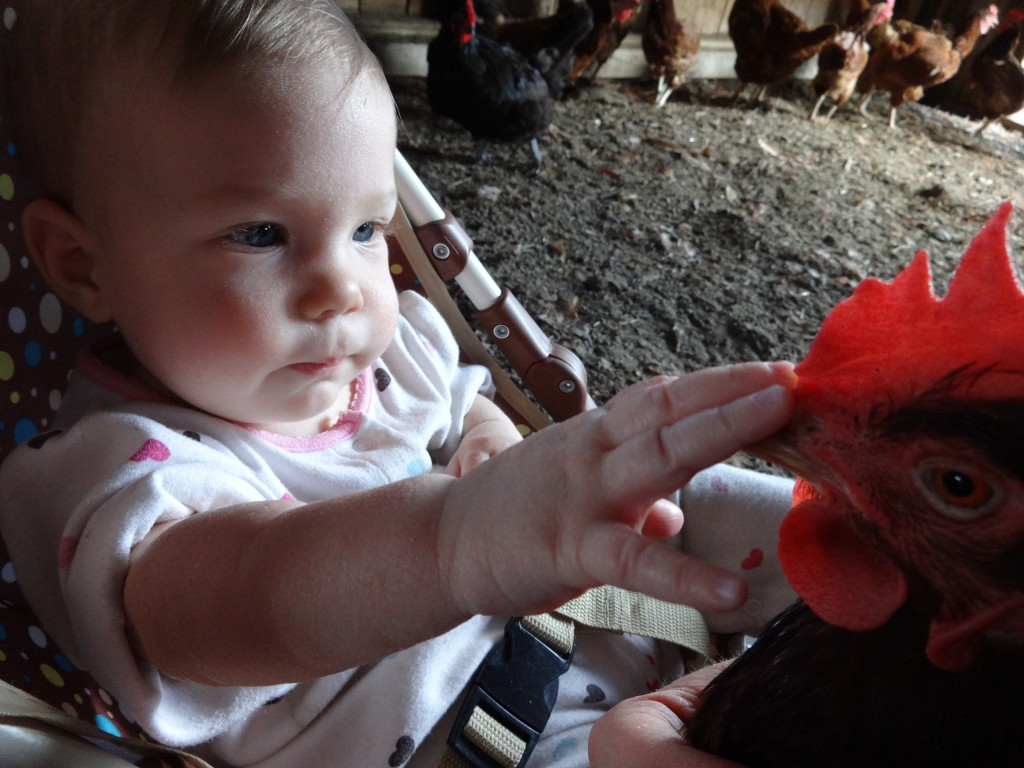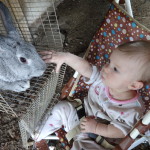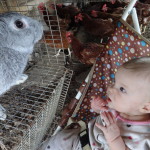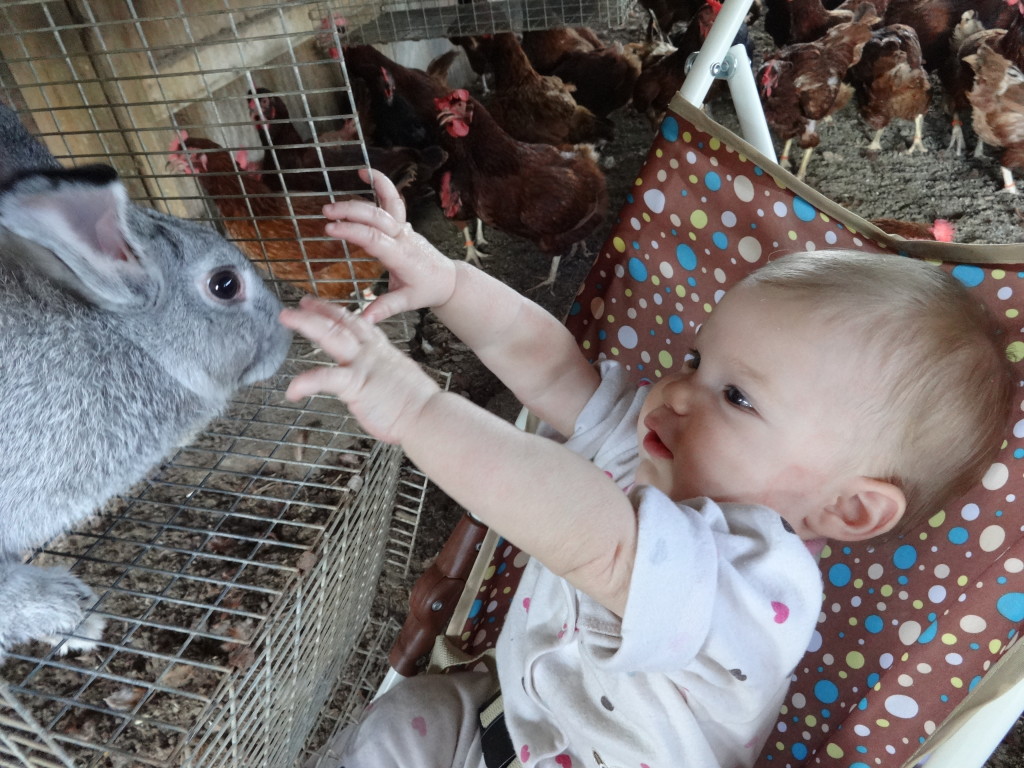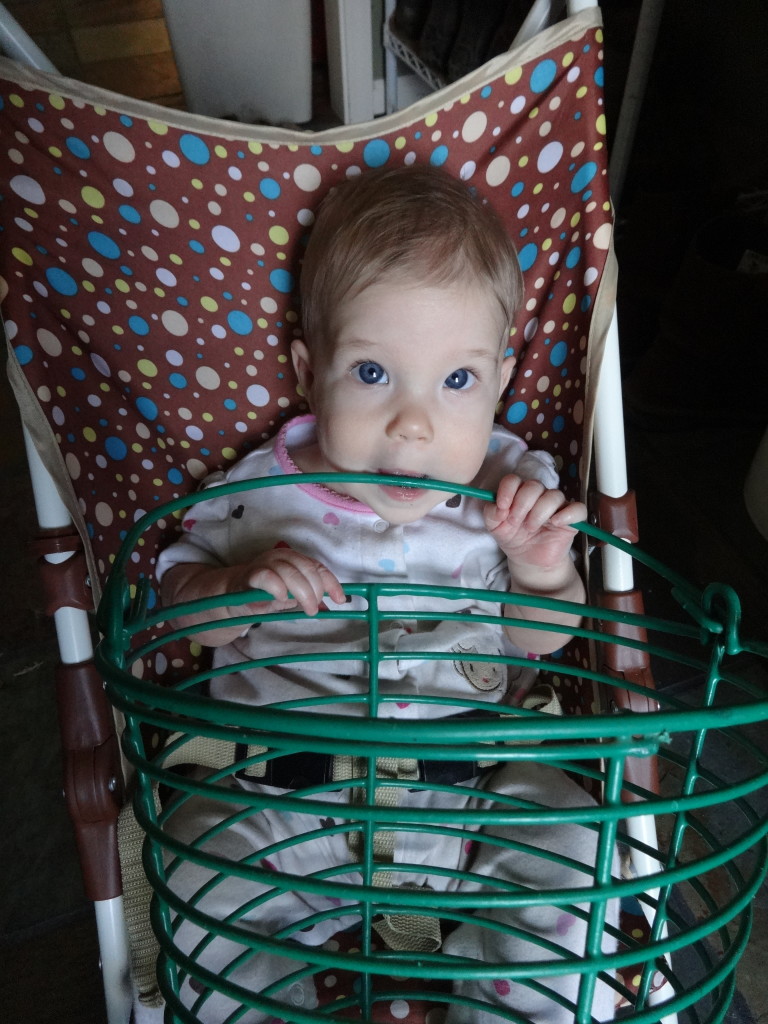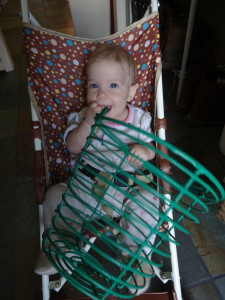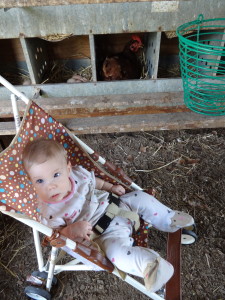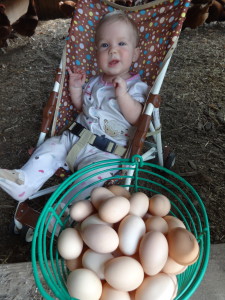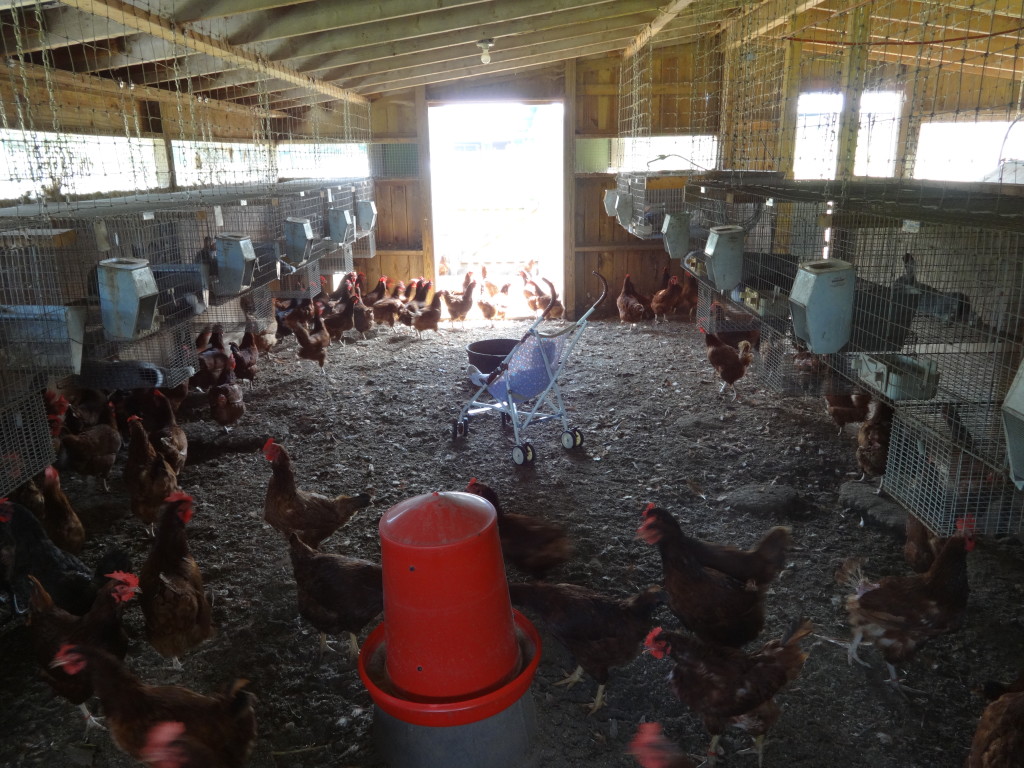Have you ever grown Sweet Potatoes? This year was my first time trying it. Mama had a couple leftover potatoes that had begun to sprout, so I tried growing them two different ways. The larger sprouts I broke off and placed in a little jar of water. The smaller sprouts we left on the potato and just cut the whole top of the sweet potato off to stick in some water. Sorry, no pictures of all this…I think the camera found a cozy place to curl up and was off having a nap somewhere. 🙂
The results were interesting indeed. Both sprouts grew roots and leaves while in the water, so after awhile, I planted them outside in a raised bed just outside my door (with Mama’s help). Papa said I might not get any potatoes (or maybe just wee little ones) since I planted them so late in the year (near the end of August), but we all figured it wouldn’t hurt to try and see what would grow in such a short amount of time.
If you’ve never seen sweet potato plants, they are nearly worth growing just to see the pretty leaves they sprout. They look almost like an ivy…..very nice dark green with shades of purple mixed in on some of the leaf edges.
After a while, they set on blooms and I knew the potatoes were beginning to grow. Now it was a race to see how large before the frosts and freezes of winter would kill the plants.
As you can see below, by the middle of November, the plants were mostly finished off by several blasts of cold weather from the north.
Now, the real fun began! Mama & I each grabbed a shovel and were off to see if we had anything large enough to eat under all those leaves and dirt…..and lo, and behold…..we began unearthing actual sweet potatoes. We were excited to say the least!
Remember how we had planted some of them still attached to the top of the potato? Well, these grew more and larger potatoes then the ‘sweet potato slips’ we had broken off to root and grow on their own. We had planted them with the top bit sticking out of the ground.
Most vegetable material that touches or is buried under the ground begins to rot very quickly, but not these sprouted potatoes! Check out the jungle of roots under the piece of potato; each was growing several sweet potatoes underground. When we pulled them up, they broke off near the main sweet potato piece we had planted.
After that, we stuck in the shovels nice and deep and turned over the rich soil.
More and more and more Sweet Potatoes — YUM!!!
I’m sure glad we tried to grow them, even if it was a short amount of time. I figure, a small sweet potato is better than no sweet potato!!!
Back inside, Mama got out her deep cast iron skillet with coconut oil, sliced up a few of the potatoes, and viola, we had delicious Sweet Potato fries (chips actually)!
It sure was a tasty lunch of my own Sweet Potatoes, soaked Lentils, and Grass-fed Beef!!! Hard work in the garden pays off in a very finger-lickin’ way, don’t you think? I hope to plants LOTS of Sweet Potatoes next year…..this time, in the springtime. 🙂

